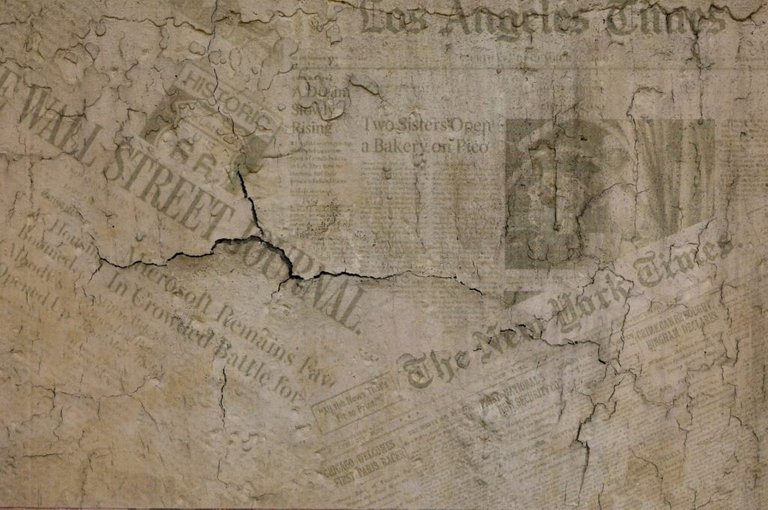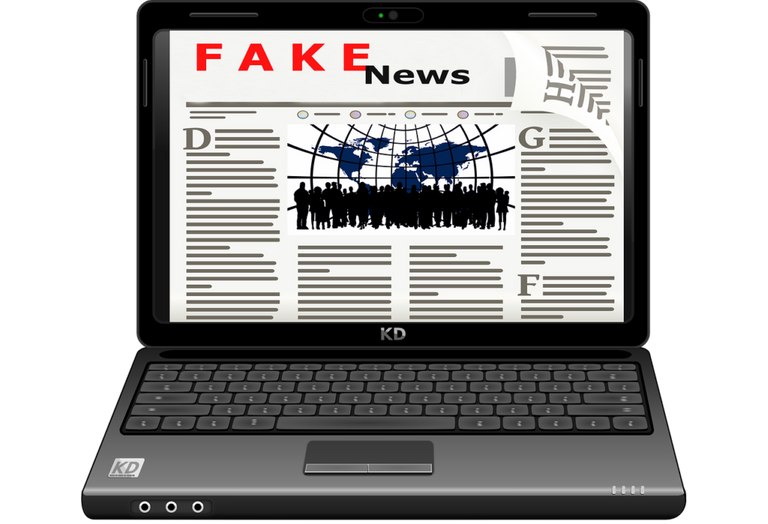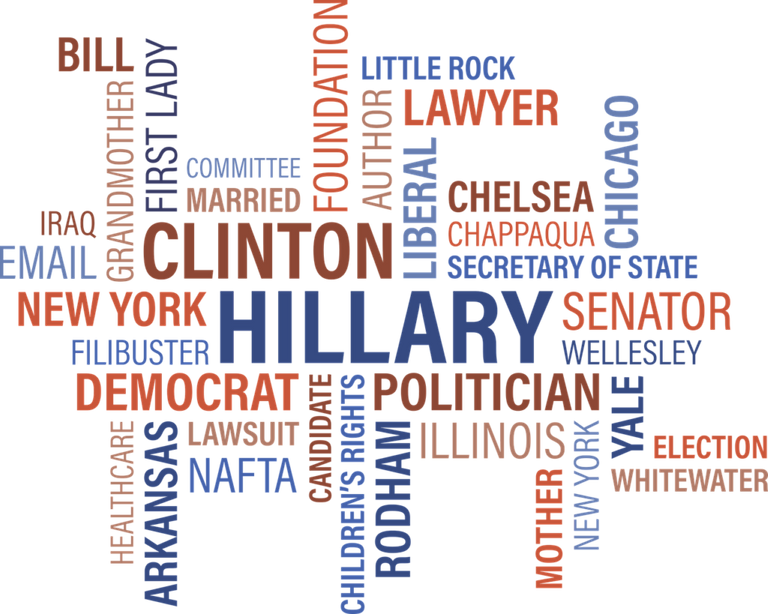“The man who reads nothing at all is better educated than the man who reads nothing but newspapers.” – Thomas Jefferson
Originally published on USAHerald.com, an original piece to the USA Herald, we felt this would be a good introduction for Steemit users to our content.
One of the most insightful ways to view modern media is through the perspective of history. Throughout the history of journalism, new distribution methods - radio, TV, and now the Internet – have changed the way the news is distributed and consumed, but the demons of political bias that haunted early publications have continued to influence modern media outlets.
Pamphlets and Politics
When newspapers began in Europe, they were nothing more than handwritten pamphlets boasting a “political agenda.” Examples included The Weekly News of 1622 and The London Gazette of 1666. Pamphlets such as these were circulated among close friends, family, and merchants as a primary means of communication regarding important issues such as war, the economy, and social customs.
The Founding Fathers used the power of the pamphlet to incite the people to revolt against the British. Common Sense, a pamphlet written by Thomas Paine promoting independence, was widely distributed and in proportion to the colonial population outperformed many of today’s bestselling books. Common Sense, though it is perhaps the most prominent example, is just one of hundreds of pamphlets published and distributed in the colonies up through 1776.
It wasn’t until 1690 that newspapers were introduced to the United States. Publick Occurrences both Foreign and Domestic, appearing in Boston, Massachusetts, was the first publication. Having been published without any regard to authority, its first (and last) edition was initially met with great resistance. Much of the resistance was due to unfavorable reporting on the British treatment of French prisoners, suggestions that the British had aligned themselves with “savages,” and the fact that the publisher, Benjamin Harris, had not received permission to print the publication. Publick Occurrences was immediately suppressed, Harris was arrested, and all copies were destroyed. But why?
According to Bruce Thornton, a research fellow at the Hoover Institution, and a professor of classics and humanities at California State University, “The notion that reporters should possess Olympian objectivity is relatively recent. In the nineteenth century, most newspapers were explicitly linked to a particular political party and the economic interests of the publisher.”
Newspapers, throughout history, have rarely been about what the public should hear or what they have a right to hear. In fact, they have often been about what the government wants the public to hear. Since newspapers were first created, the government has frequently demanded a hand in writing them.
In 1704, the American Colonies’ second newspaper, The Boston News-Letter, was published. This publication provided information on events and politics in Europe and worked with the British government to disseminate information. Other, similar newspapers began sprouting up all over the emerging nation, supported by printing contracts with Great Britain. Newspaper printers received much of their information from printers in other cities and began exchanging copies and stories amongst themselves, similar to a modern news-wire.
In the 1760’s, as the French-Indian War came to an end, the focus of these publications began to center on the colonies’ increasingly strained relations with Great Britain. During this time, printers became less reliant on the British printing contracts. Due to the political climate, printers also began to gravitate to different sides of the argument for independence, and the idea of neutrality was all but abandoned. As tensions rose, the entire nation was receiving much of the same information and, through this system, the Founding Fathers were able to distribute the message of independence and resistance very quickly.
With government involvement in the print industry, the door is opened for promoting the political bias of the ruling party. Historically, this involvement has been used to control the sentiment of the general populace. In the 1700s, a Whig was more likely to push a story that promoted independence, where a Tory would promote just the opposite. In the modern media, a liberal official is much more likely to push stories that reflect positively on the Democratic party, and vice versa. In an era where political parties are willing to go to great lengths to promote their side (whether right or left), biased (and in some cases, falsified) news can be the result.

Emergence of Mass Media
By 1900, newspapers had transformed from pamphlets to mass publications. There were several major publications in existence, all considered to be profitable powerhouses for advocacy and sensationalism. The New York Times, The Washington Post, and The Chicago Tribune all began to emerge around this time (among countless others). These were, and are still, regarded as some of the most influential newspapers in journalism. It was not uncommon for the average American citizen to read several newspapers each day, until the adoption and popularization of radio and television. By the 1920s, radio and television took over and began to play integral parts in the communication of important information. While the methods of distributing news had changed, these new publications, radio, and television shows featured many of the same biases as their predecessors.
The media’s coverage of Joseph Stalin and the Soviet Union is a notorious example of early liberal bias, and could possibly be the worst coverage in the history of the media. In fact, during and after World War II, Joseph Stalin was a well-loved figure in the United States. Under his leadership, the Soviet Union conducted purges of political adversaries, activists, and even specific nationalities, which included mass executions and torture of hundreds of thousands of Soviet citizens. In spite of this, the liberal media – in particular, Walter Duranty, the Russian correspondent for the New York Times - steadfastly refused to report the monstrosities, and in many cases reported just the opposite.
Digital Age
Now, fast-forward to the twenty-first century and the invention of digital journalism. Newspapers have transitioned from a focus on print publishing to digital distribution, allowing reporters access to audiences (and sources) around the globe. It’s nearly impossible to think of a reputable news source that doesn’t have a website, not to mention a Twitter, Instagram, and Facebook account. It’s difficult to imagine a time when consumers waited weeks or even months for the transmission of information. With the introduction of the digital era, news content is generated rapidly. As a story is unfolding, it is already available at your fingertips. News publications today have redefined the term “breaking news.”
The instantaneous nature of today’s news also means that inaccurate reporting, media bias, and “fake news” is more prevalent than ever before, and has a much broader reach. The use of hashtags and keywords on social media are allowing these fake news stories to be quickly picked up and spread before they are properly vetted, generating views and driving traffic. Aspiring entrepreneurs have been watching and analyzing this trend carefully. These entrepreneurs see it as a business opportunity and are eager to profit from it. They are dedicating their time to generating websites that specialize in broadcasting fake news, solely for profit and entertainment purposes.

Fake News for Fun and Profit
During the recent presidential election, the public witnessed the real-world consequences of fake news. One particular story, “FBI Agent Suspected In Hillary Email Leaks Found Dead In Apparent Murder-Suicide,” went viral on Facebook after having been shared over a million times. If you thought the headline sounded believable, you weren’t alone. As it turned out, the story was completely false. The article originated on DenverGuardian.com, which was planned and designed to mimic other local news websites. Upon further investigation, it was discovered that this headline was the only news story ever published to the site.
Jestin Coler, the owner of DenverGuardian.com, and CEO of a company called Disinfomedia said, “My educational background is in political science. I've always enjoyed the ideas of propaganda and misinformation. I got into fake news around 2013, to highlight the extremism of the white nationalist alt-right.”
Coler was shocked to discover just how quickly fake news could spread using social media. His story about the FBI agent generated over 1.6 million views within 10 days of being published on the site. Every time that story is shared on social media, clicks are being generated, and Coler is profiting from the advertisements strategically placed on his website.
A fake news website can be defined as any website that knowingly publishes hoaxes, propaganda, and disinformation to drive web traffic inflamed by social media. Google and Facebook have begun to ban fake news websites from using their online advertising. Facebook has also partnered with various fact-checking groups to pro-actively flag fraudulent news and hoaxes.

Mainstream Media Misinformation
While websites creating fake news for profit are a new development, they are not the only groups that were accused of fraudulent reporting this year.
POLITICO, a “global news and information company at the intersection of politics and policy,” fired liberal reporter, Julia Ioffe, over a fake news post on Twitter about Donald Trump. The tweet was not only representative of fake news but also of careless and poor judgment.
Ioffe, 34, made painful suggestions that President-elect Trump was engaging in sexual relations with his daughter, Ivanka. The suggestion was made in response to a recently published article, stating that Ivanka Trump would be occupying an office in the White House normally reserved for the first lady.
As fake news often does, the tweet quickly began trending on social media. It received over 1,037 likes and was shared over 442 times on Twitter alone. Despite likely having been published to generate traffic, a tweet such as the one above could have serious repercussions for those involved. Although the original tweet was deleted, there are dozens of screenshots and text-based copies still in existence.
Politico is not the only major news outlet to come under fire for biased reporting.
According to Amber Lyon, a three-time Emmy award-winning journalist, “CNN is routinely paid by the US government and foreign governments to selectively report on certain events and make up fake news stories. The Obama administration also pays CNN for editorial control over some of their content.”
In March of 2011, CNN assigned several reporters to cover the Arab Spring in Bahrain. The reporters were subject to extreme intimidation while there but managed to capture some incredible footage.
“In the segment, Lyon interviewed activists as they explicitly described their torture at the hands of government forces, while family members recounted their relatives’ abrupt disappearances. She spoke with government officials justifying the imprisonment of activists. And the segment featured harrowing video footage of regime forces shooting unarmed demonstrators, along with the mass arrests of peaceful protesters. In sum, the early 2011 CNN segment on Bahrain presented one of the starkest reports to date of the brutal repression embraced by the US-backed regime,” said Glenn Greenwald of the UK Guardian.
Regardless of the apparent devotion and danger that went into producing the documentary, CNN International decided against broadcasting it. Many employees inside CNN, including Lyon, were furious and filed formal complaints against the company. Despite these allegations from employees, CNN refused to air the program or give a reason why. It was later determined that the Bahrain Government had paid CNN not to show it.
CNN also allegedly decided not to air a Nick Robertson interview with Muhammed Al Zawahiri in Egypt because it undermined statements by President Barack Obama and Secretary of State Hillary Clinton.
For centuries, newspapers and media have been used as a source to promote a specific, usually liberal, political agenda. This was apparent in early news pamphlets such as The Weekly News of 1622 and is even more apparent with the modern mainstream media today as noted by the POLITICO and CNN examples. During the election years, this bias has a tendency to go into overdrive. With the introduction of digital journalism, inaccurate reporting, political bias, and fake news is at an all-time high and is spreading like wildfire. Social media platforms such as Facebook, Twitter, and Instagram make it easier-than-ever-before to share content, whether factual or fake. With technology continuing to grow and develop, and partisanship at an all-time high, that doesn’t seem like it will be changing anytime soon.


Facebook & Twitter.@USAHerald, your post has been chosen by @STEEMNEWS.ONLINE as one of today's promoted posts for its excellent content. We've upvoted, resteemed and published it through
As the author of a SNO featured article, you've been awarded one TRAIL coin. Please stop by the SteemTrail Discord server to learn more about how to claim your TRAIL coin. You will need an Open Ledger account to do so.
Streemian, in addition to steemtrail.STEEMNEWS.ONLINE is the @SteemTrail for #news and watches the #steemnews tag most closely. Please consider supporting excellent news articles by making steemnews.online one of your operators on
Thank you for your hard work and contribution of excellent content to Steemit.

If you would rather not be promoted by STEEMNEWS.ONLINE, please inform us by replying to this comment and we will honor your request.
Great! Thank you for the additional exposure!
Welcome to Steemit!
Strong original content here. You should consider tagging with some more popular tags on your next posts. Tags get their own pages and may have higher visibility. Trending tags are visible on this page: https://steemit.com/tags
News, philosophy, writing, politics are tags relevant to your type of content and might get you more visible to the community at large!
Thanks @neoncow! We will take note of that for our next posts!
Actually, since your post is so fresh you should be able to edit the tags right now. You should see an edit button at the bottom of your post.
If you click the tags in your post, you can see the community that links to them. Newspapers, journalism, free-press tags seem to be quieter communities. You could consider swapping them out for some of the more active ones like News, philosophy, writing, politics
Thanks! Love the idea of your service. Followed!
He's a nice fella!
Done! Thanks for the tips!